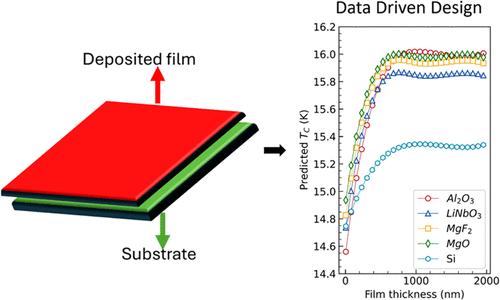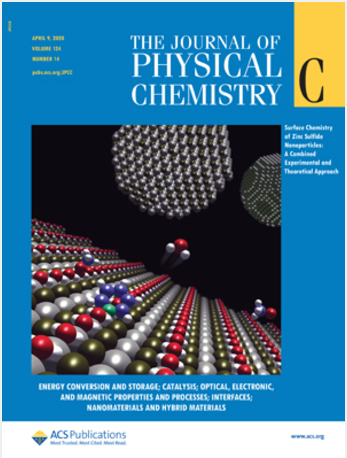数据驱动的氮化铌层状结构过渡温度增强:量子材料设计框架
IF 3.3
3区 化学
Q2 CHEMISTRY, PHYSICAL
引用次数: 0
摘要
与其他过渡金属氮化物相比,氮化铌具有较高的超导转变温度(TC),因此已成为超导应用的重要材料。然而,仍有必要进一步提高超导转变温度,并开发一种快速扫描材料设计空间和微调加工参数以优化性能的框架。本文所开发和应用的独特集成方法通过集合建模方法,将分类和定量数据与微调薄膜厚度、基底化学性质和加工参数的优化方法相结合,开发出通用设计规则,从而增强了氮化铌的热导率。由于实验数据被用于建立模型,因此缺陷的影响从本质上被捕捉到了。通过这一独特的框架,确定了一系列可控因素的组合,与采用相同沉积方法的最佳 NbN 薄膜相比,计算得出的 NbN 薄膜 TC 值提高了 16.4%。本文章由计算机程序翻译,如有差异,请以英文原文为准。

Data-Driven Transition Temperature Enhancement of NbN Layered Structures: A Framework for Quantum Materials Design
NbN has become an important material for superconducting applications, largely due to its ability to have a high superconducting transition temperature (TC) compared with other transition metal nitrides. However, there is still a need to enhance the TC further as well as to develop a framework for rapidly scanning the material design space and fine-tuning the processing parameters for optimized properties. The unique integrated approach developed and applied here enhances NbN TC through an ensemble modeling approach to develop general design rules coupling categorical and quantitative data with an optimization approach for fine-tuning the film thickness, substrate chemistry, and processing parameters. As experimental data are used to build the models, the effects of defects are inherently captured. Through this unique framework, a combination of controllable factors are identified which lead to a calculated increase of 16.4% in the TC of the NbN film as compared with the best NbN film using the same deposition methods.
求助全文
通过发布文献求助,成功后即可免费获取论文全文。
去求助
来源期刊

The Journal of Physical Chemistry C
化学-材料科学:综合
CiteScore
6.50
自引率
8.10%
发文量
2047
审稿时长
1.8 months
期刊介绍:
The Journal of Physical Chemistry A/B/C is devoted to reporting new and original experimental and theoretical basic research of interest to physical chemists, biophysical chemists, and chemical physicists.
 求助内容:
求助内容: 应助结果提醒方式:
应助结果提醒方式:


